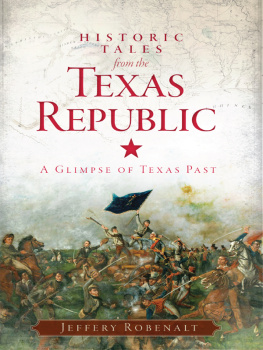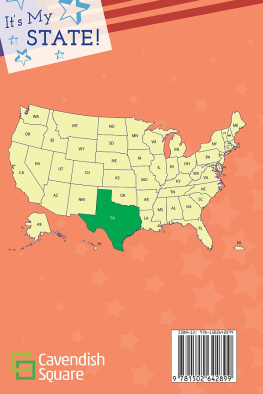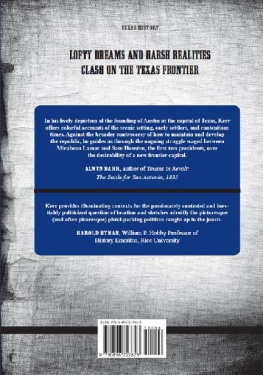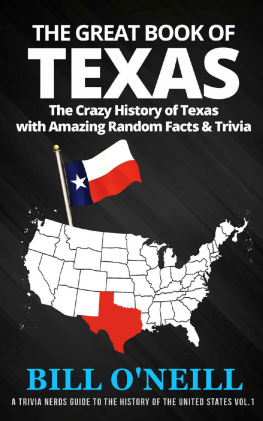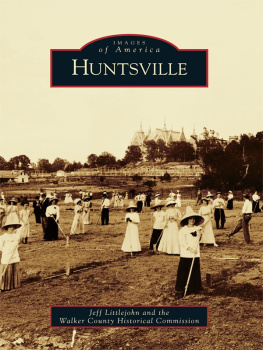
Published by The History Press
Charleston, SC 29403
www.historypress.net
Copyright 2013 by Jeffery Robenalt
All rights reserved
First published 2013
e-book edition 2013
Manufactured in the United States
ISBN 978.1.61423.936.9
Library of Congress CIP data applied for.
print edition ISBN 978.1.60949.938.9
Notice: The information in this book is true and complete to the best of our knowledge. It is offered without guarantee on the part of the author or The History Press. The author and The History Press disclaim all liability in connection with the use of this book.
All rights reserved. No part of this book may be reproduced or transmitted in any form whatsoever without prior written permission from the publisher except in the case of brief quotations embodied in critical articles and reviews.
CONTENTS
ACKNOWLEDGEMENTS
No author and family man could possibly undertake the project of writing a book without the loving cooperation of an understanding wife and daughter like my Lizabeth and Emily. They held things together at home without interruption or resentment during the many times when my head was buried deep in my laptop and my mind was immersed in old Texas. Without their love and support, this book would have never been a reality. Thanks also to my good friend and church brother Kevin, who was always there to lend a word of encouragement when I most needed it, and to my very best friend Mark, who never stopped believing in my ability to finish this project. I also wish to thank my good friend and historian Donaly Brice for the assistance he provided in acting as a sounding board for many of my ideas. Finally, I wish to thank my editor, Christen Thompson. Her belief in my ability, ongoing patience and invaluable guidance kept me on the right path and enabled me to reach my goal.
INTRODUCTION
Although the history of the Republic of Texas has been chronicled many times over the years, a few of the key individuals and defining moments from its storied past have been seldom touched upon or looked at under a different light. The republic was forged by a cast of outstanding and unforgettable characters whose personalities and penchants committed the Lone Star State to its unique history. The first two presidents, Sam Houston and Mirabeau Lamar, were the driving forces in shaping much of the new nations brief history. Although both men were united in their love of country and belief in its greatness, they were committed to opposite paths. Surprisingly, the flamboyant warrior Sam Houston chose a peaceful path of negotiation and austerity, while the quiet poet Mirabeau Lamar led by the sword on a free-spending path to glory. Mexican dictator Antonio Lopez de Santa Anna also influenced much of the republics history. His belief in a strong centralist government led to the Texas revolution, and his refusal to recognize the independence of the new republic after the revolution was the driving force behind many of the actions taken by Houston and Lamar. Stephen F. Austin, the Father of His Country, was a calming influence in troubled times, and his early death was a great loss to the new nation. Then there were Captain Jack Hays and his Texas Rangers with their Colt revolvers, still looked upon as a symbol of Texas, and Commodore Edwin Moore of the little-known and seldom-celebrated Texas Navy.
The essays that make up this book are not intended to be a comprehensive history of the republic; rather, they hope to provide the reader with a closer look at a unique moment in history that he or she may have overlooked. Of course, some of the people and happenings discussed here are well known, like William Barrett Travis and the heroic stand of the defenders at the Alamo. However, they could not have been omitted from any chronicle purporting to tell even a portion of the republics glorious and checkered past. Other people and events have managed to survive only in the murky shadows of history, but they too deserve their brief moment in the spotlight. From the formation of the new nation to the process that eventually led to its annexation and statehood, the history of the Republic of Texas is one of desperate struggles, tragic failures and unparalleled successes. It is my hope that this book manages to delve into a few of those moments and presents them in both an understanding and entertaining light.
Chapter 1
THE RISING TIDE OF REVOLUTION
Unrest in the Mexican Province of Coahuila y Tejas
Mexicos independence from Spain and the Mexican Constitution of 1824 brought a new wave of immigration to Texas from the United States. Not only did the new settlers have to cope with the usual hardships of beginning life in a strange land, but they also had to adjust to living in a country with a set of customs and laws that were alien to their nature. Some colonists did their best to accept the conditions of settlement established by the Mexican government, such as swearing allegiance to a foreign country and agreeing to adopt Catholicism, but many refused to make sincere efforts to become loyal citizens. Instead, they continued to speak their own language, keep their own religions, establish their own schools and start their own newspapers. Mexican officials began to worry that the colonists from the United States were becoming too independent.
Tensions also began to rise within Mexico over the balance of power between the states and the national government. Like the United States, Mexico was organized into separate states. Moreover, the Mexican Constitution of 1824 was based on the concept of states rights, wherein the majority of power resided at the state level. Prior to the constitution, the central government in Mexico City held most of the power, and many Mexican leaders felt that it should return there. The centralists who favored a strong central government feared that too many American settlers were moving to Texas and that the combination of a growing Anglo population and a strong government in the state of Coahuila y Tejas might encourage the colonists to seize the province of Tejas and join the United States.

Map of Coahuila and Texas, 1835. Engraved by W. Hooker. Courtesy of Texas State Library and Archives Commission.
In 1825, a conflict arose concerning land ownership in empresario Haden Edwardss land grant near Nacogdoches. When Edwards had the land surveyed, he found that many people were already squatting on his grant, including the Cherokees and the descendants of Mexicans who had settled there many years before. All empresarios were required to honor the rights of any settlers they found living on their grants, but unfortunately for Edwards, his was the only grant that had an appreciable number of settlers. Edwards posted notices that the squatters would be evicted from the grant unless they presented proof of legal ownership. Most settlers had no such proof. Instead, they complained to Mexican officials in Saltillo, the capital of Coahuila y Tejas, and Governor Blanco sided with them. Edwardss brother Benjamin wrote a series of angry letters to the governor protesting the decision.
Edwardss problems escalated when he overturned the results of an election for the mayor of Nacogdoches. Most longtime settlers voted for local resident Samuel Norris, but Edwards handed the election to his son-in-law. In response, a now angry Governor Blanco reversed the election, cancelled Edwardss land grant and issued an order for Haden and Benjamin to leave Texas. The Edwards brothers refused the order and signed an alliance with some of the local Cherokees. Forming the Republic of Fredonia, the rebels declared independence on December 16, 1826. Mexican authorities immediately dispatched soldiers to suppress the rebellion. Stephen F. Austin, who worried that that the actions of the Edwards brothers would reflect poorly on all Texas colonists, joined his militia with the Mexican troops. The conflict ended peacefully in January 1827 when Haden and Benjamin fled Texas before the combined force reached Nacogdoches. Two Cherokees were hanged for their involvement in the episode.
Next page
